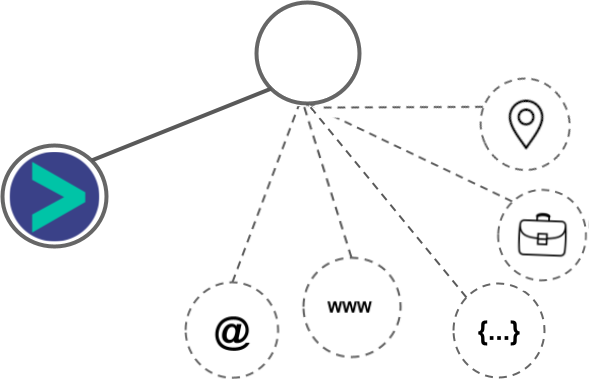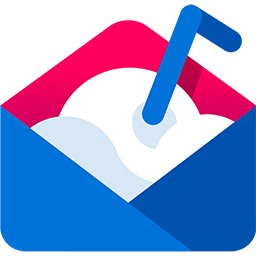Pipeline vs Pardot
Hyperise integrates with 100's of sales and marketing tools, many of which are in the CRM category. With so many to choose from it's sometimes hard to know which is best, but don't worry, we've got your covered.
In this comparison guide we're going to look at the Highlights, Pros, Cons and Pricing of Pipeline and Pardot. We'll also delve into the details of which offers the best personalization options within CRM, with there respective Hyperise integrations

Pipeline
Pricing: Pipeline pricing is a pricing strategy used by retailers to drive an increase in sales. It works by setting the original price of an item higher than the intended sale price in order to convince customers that they are getting a great deal. The strategy encourages impulse buys by providing an incentive for customers to purchase an item before the discounted price expires. This strategy can be especially effective for seasonal items or items that are considered fashion-forward or trendy.
Vs
Pardot
Pricing: Pardot offers various enterprise pricing plans for users to choose from. Prices start at $1,250 per month (billed annually) for the Professional plan, and $3,000 per month (billed annually) for the Enterprise plan. All plans include unlimited accounts, automation, and lead scoring.
Pipeline vs Pardot Highlights
Pipeline and Pardot are both popular sales and marketing automation platforms but offer different features and benefits to users. Pipeline is a sales automation platform that helps businesses focus on developing relationships, converting prospects into customers, and optimizing sales cycles. Pardot is a marketing automation platform that enables marketers to capture leads, nurture them, and track performance with analytics, build relationships with customers, and optimize the sales process. Generally speaking, Pipeline is best equipped for sales automation tasks, while Pardot is better for managing entire marketing automation campaigns. Both platforms provide powerful automation capabilities and allow users to automate their sales and marketing processes, but the main difference is in their capabilities and the focus of their feature set. Pipeline is designed specifically for sales automation and performance tracking, while Pardot is designed to assist marketers in campaign management, lead nurturing, and analytics.
Pipeline vs Pardot Pros
Pipeline Pros
- More automation power and flexibility Pipeline lets you automate more of your marketing tasks than Pardot, giving you more control and flexibility over what tasks you want to automate.
- Custom coding is easier Pipeline lets you customize and integrate with existing systems much more easily than Pardot, allowing you to easily build complex marketing automation campaigns.
- More advanced customer segmentation Pipeline allows you to create more complex customer segments and personalize content and targeted campaigns easily.
- More comprehensive analytics Pipeline provides comprehensive marketing analytics, enabling you to make better informed decisions on marketing strategies.
- Easier UI/UX Pipeline has a more intuitive and user-friendly interface than Pardot, making it easier for marketers to create, manage and optimize campaigns.
- More cost effective Pipeline is generally more cost effective than Pardot, as you have to pay for the features you use.
Pardot Pros
- Deals
- Easily customize and design email templates for more efficient multi-channel marketing campaigns
- Leverage multiple marketing channels to maximize reach and engagement, including email, social, web, and more
- Automate lead generation campaigns using powerful segmentation and targeting capabilities
- Easily integrate with Salesforce CRM for a seamless lead engagement experience
- Optimize campaigns with ROI insights and analytics
- Utilize forms, bots, and surveys to capture leads across channels
- Gain a comprehensive view of each individual lead with comprehensive lead scoring and tracking capabilities
- Reduce time spent on manual tasks with automated sales and marketing workflow management
Pipeline vs Pardot Cons
Pipeline Cons
- Pipeline:
- Costly may require upfront investments
- Can require technical expertise for setup, integration and maintenance
- Learning curve may require significant training
- Limited scalability with certain plans
- Pardot:
- Slower implementation than Pipeline
- Less flexible integrations with third-party applications
- More limited native functionality than Pipeline
- Lower overall capability compared to Pipeline
Pardot Cons
- High user costs: Pardot is more expensive than most of its competitors
- Limited customization capabilities: Pardot does not offer users the same level of customization as other marketing automation platforms
- Lack of integration with third-party tools and services: Pardot does not integrate with many of the tools and services users might need for their marketing campaigns
- Limited scalability: Pardot is not designed for companies with large or rapidly growing contact databases.
- Difficulty of setup and use: Pardot can be difficult for non-technical users to set up and use.
- Limited customer support: Pardot does not offer dedicated customer support and users must rely on a knowledge base for assistance.
Pipeline & Pardot Hyperise Integrations
Pipeline uses the Image embed method to integrate with Hyperise, giving a simple way to add personalized images to your messages.
Pipeline makes the following data points available to Hyperise, to enable personalization in images used in outreach and linked out to your personalized website landing pages.

- Using business Email passed from Pipeline, Hyperise is able to enrich business logo and website screenshots. In some cases, with a business Email we're also able to enrich profile images, subject to the business email having a publicly available profile.
- Business name
Pipeline Integration Guide
Pardot uses the HTML code embed method to integrate with Hyperise, giving a simple way to add personalized images to your messages.
Pardot makes the following data points available to Hyperise, to enable personalization in images used in outreach and linked out to your personalized website landing pages.
- Using business Email passed from Pardot, Hyperise is able to enrich business logo and website screenshots. In some cases, with a business Email we're also able to enrich profile images, subject to the business email having a publicly available profile.
- Using business Website passed from Pardot, Hyperise is able to enrich business logo and website screenshots.
- Business name
- City
- State
- Country
- Zip
- Category
Pardot Integration Guide
 vs
vs 

 vs
vs 
 vs
vs  vs
vs  vs
vs  vs
vs  vs
vs  vs
vs  vs
vs  vs
vs 










